Eureka! Gold found In Ballarat
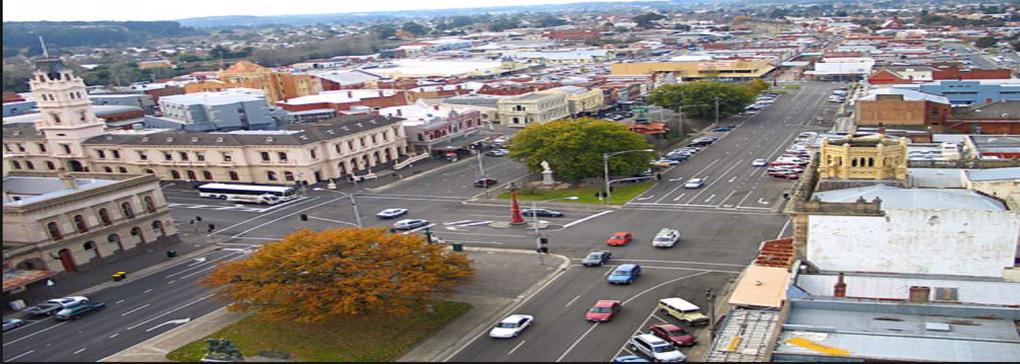
In August 2019, I had the opportunity visit Ballarat, in the heart of the Victorian Goldfields. As regular subscribers are well aware, Anne hails from Bendigo, which also developed on the back of the gold rush. What I love about the Goldfield towns is their wonderful history and the legacy we see in the majestic buildings which remain today.
In August 1851 gold was discovered in Ballarat - much of the gold was found quite close to the surface, sometimes just a few centimetres under clay or gravel.
Within days of the initial find, a gold rush began, bringing thousands of prospectors to the area. Yields were particularly high, with the first prospectors in the area extracting between half an ounce (which was more than the average wage of the time) and up to five ounces of alluvial gold per day.
During the 1850s due to the rich finds in Victoria, Australia produced about 40% of the world's gold. The world’s adventurers, non-conformists and fortune hunters, flocked to Ballarat’s gold fields. The wealth from gold made Ballarat the richest place on earth for a time. Along with banks and governments, many sunk their fortunes into the streetscape.(credit: ballaratgenealogy)
Here we see Old Ballarat as it was in the summer of 1853-54 by Eugene von Guerard.
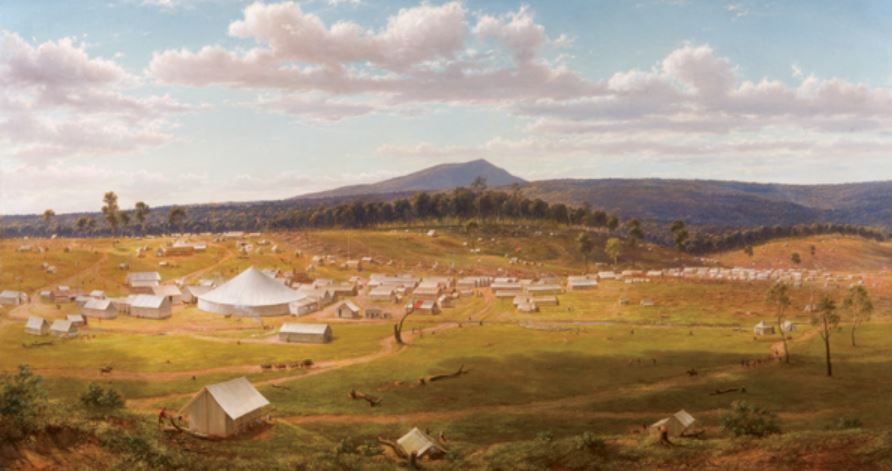
What a dramatic change in 30 years when we look at this painting – Ballarat 1886 by James Meadows.
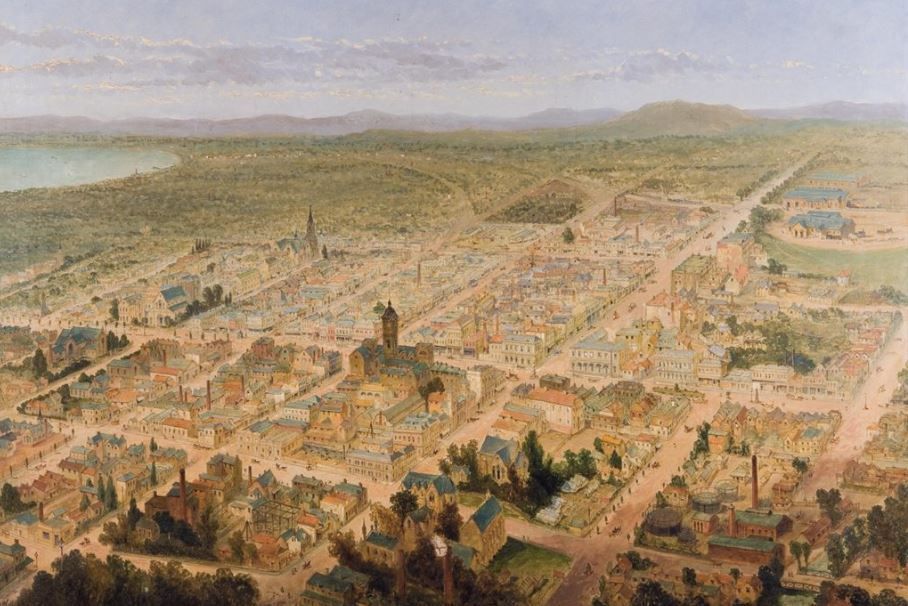
Such was the prosperity of Ballarat, it was often compared with cities in Europe, and Edinburgh in particular because of the 3-chain wide grand boulevard that Sturt Street was becoming. Scottish-born benefactors whose wealth had come from gold wished to emulate the famous Royal Mile in Scotland's capital city.
Today the bluestone and handmade brick structures remain as treasured as ever; some re-invented as wine bars, theatres and bustling cafes, making Ballarat an intriguing mix of old and new.
Lets take a look at a few of these fabulous buildings and the folklore that comes with them.
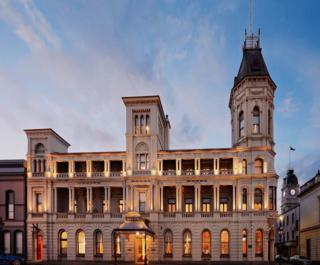
Craig’s Royal Hotel (pictured above), located on historic Lydiard Street in heart of Ballarat, is the legendary Australian gold-rush era grand hotel. Built in 1862 on the site of Bath’s Hotel, Ballarat’s first officially licensed pub. Craig’s has been a goldfield icon since Prince Alfred, Duke of Edinburgh, slept in its ornately decorated rooms in 1867 and Dame Nellie Melba famously sang from its balcony in 1908.
Host to poets, prices and prime ministers over its 160 year history, the hotel is a true icon of the Victorian period.
Publican Walter Craig famously visualized his own demise. In 1870 he dreamt that his horse, Nimblefoot, won the Melbourne Cup, however the jockey was wearing a black armband. As it turned out, Craig died the day before Cup Day! (Credit: CraigsRoyal.com.au)
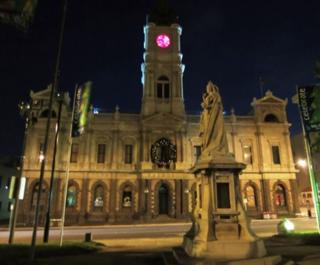
Ballarat Town Hall (pictured above) is forever linked to mad Irishman Henry O’Farrell when the former Ballarat resident took a pot shot at Prince Alfred in Sydney in 1868.
The locals made a very public apology: also purchasing a set of bells for the town hall, inscribing them with the assassination attempt and christened them the Alfred Bells. Hundreds gathered before dawn, when the bells were rung for the first time in 1871. They still ring today to mark special occasions.(credit: ballaratgenealogy)
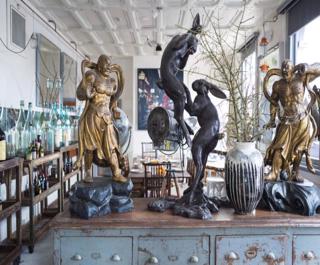
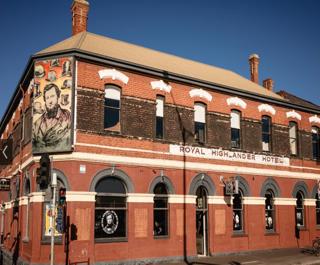
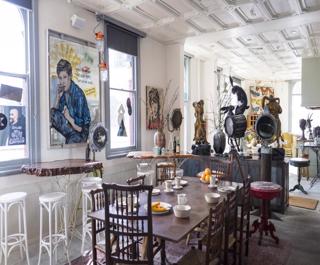
The Pub With Two Names (pictured above) (named as such because of its history as both the Royal Highlander and the Peter Lalor Hotel) has been re-invented into a unique Bar and Grill. The works of Australian artist David Bromley adorn the walls.(Credits: Bromley&Co)
A hip vibe in the charming beauty of regional Victoria, supporting and showcasing the best of local producers to rival any city a-la-carte menu.
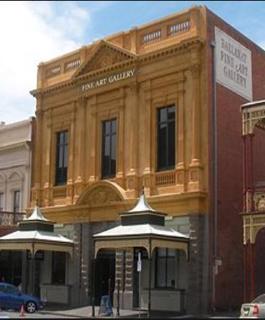
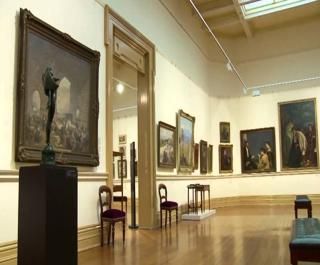
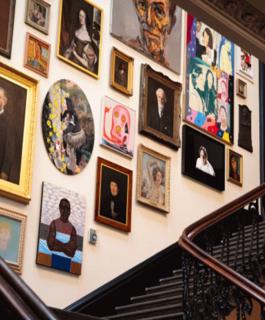
Founded in 1884, the Art Gallery of Ballarat (pictured above) is the oldest and largest regional gallery in Australia, housed in a heritage-listed purpose-built gallery which was opened by Alfred Deakin on Friday 13 June 1890.
Having come to Ballarat as a digger, James Oddie made a fortune as a real estate agent and subsequently as a banker. He had liberal attitudes both in terms of politics and culture and was a firm believer in the potential of people to lift themselves up through hard work and education. He saw the art gallery as a way for his fellow citizens to look beyond their everyday lives and be inspired and edified by the Fine Arts.
In 1885 Oddie gave the new Gallery the painting he commissioned from noted artistEugene von Guerard, still on display at the gallery today and highlighted above.(Credit: Art Gallery of Ballarat).
While in Ballarat I enjoyed their current exhibition Becoming Women: Australian Women Artists 1920-1950 – surprisingly most of the 197 paintings are owned by the Ballarat Art Gallery. I can see why they claim to an exceptional collection, built up lovingly, intelligently and often with inspiration over 120 years.
Over the next few days I will cover this excellent exhibition, share some fun facts about gold and also Sovereign Hill, an open-air museum, situated in an early gold diggings area, which brings to life the excitement of Australia’s great 1850s gold rushes.
It impossible to talk about Ballarat without mentioning the Eureka Stockade, a battle in 1854 which changed Australia forever. It has come to represent popular struggle and has been called the birthplace of Australian democracy.
From the early 1850s, hopefuls coming to the Victorian goldfields were required to pay high fees for mining licences and were ill-treated and harassed by the authorities who were meant to protect them. The government dismissed the complaints of this itinerant population, who had no vote and couldn't buy land.
By 1854, the diggers of Ballarat were fed up. When their appeal to the government for justice was refused, they declared that they would stop buying gold licences and beneath the diggers' flag – the Southern Cross – swore to defend each other against the authorities. (Credit: VisitMelbourne)
Note: Some 40 per cent of the Eureka flag was cut out and given as souvenirs to visiting dignitaries while it was in the possession of the King Family or stored with the Ballarat Fine Art Gallery, before it was authenticated beyond doubt as the real Eureka Flag. The flag now hangs in the Eureka Museum, Ballarat. (Credit: Flickr).
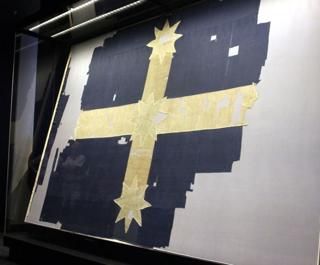
Before dawn on 3 December 1854, government troops stormed the diggers' flimsy stockade at Eureka Lead, Ballarat. In a fiery battle that lasted only 20 minutes more than 30 men were killed. Charged with high treason, the diggers' leaders were all eventually acquitted. Within a year the diggers won the vote and the hated gold licence was abolished. (Credit: visitmelbourne.com)
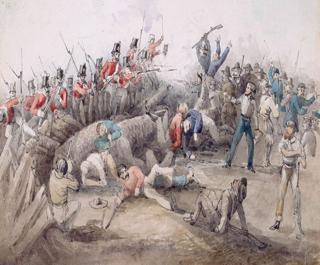
The short clip below gives a summary of the Eureka Stockade, which was filmed during the school program conducted at Sovereign Hill.
http://education.abc.net.au/home#!/media/2153105/eureka-stockade
